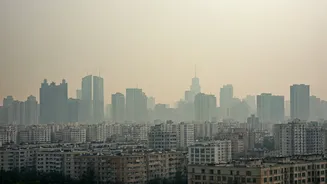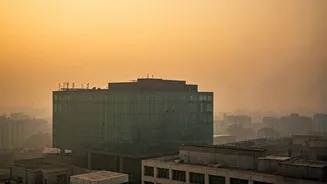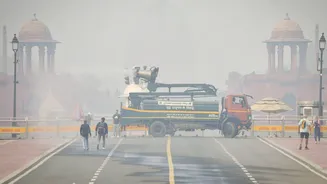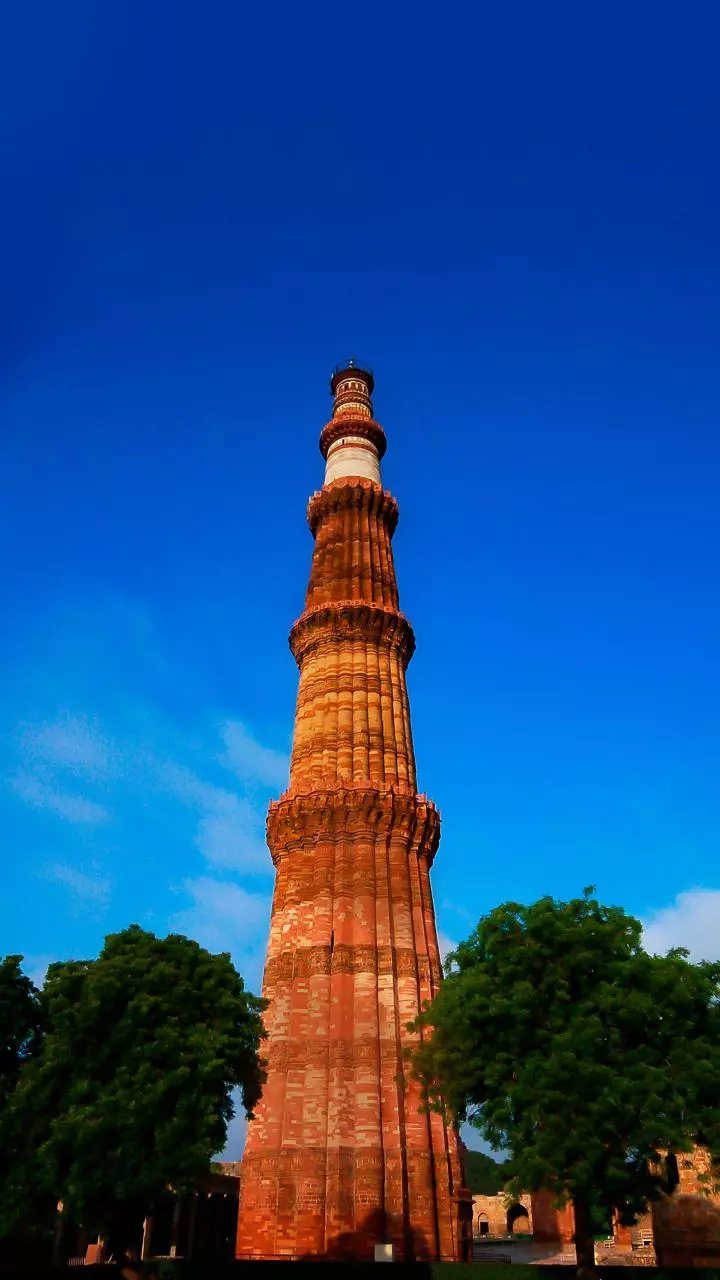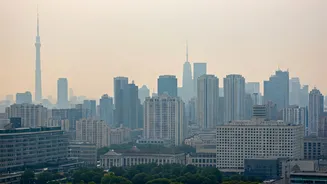Delhi's Pollution Woes
The national capital, Delhi, is consistently battling poor air quality, and today is no different. Various parts of Delhi are experiencing a thick blanket
of smog, contributing to unhealthy AQI levels. This persistent pollution poses significant health risks to the city's residents. The CPCB reports indicate that many areas within Delhi are showing AQI readings in the 'poor' to 'very poor' categories, a clear indication of the severity of the situation. This situation requires immediate attention, and the need for urgent action to address pollution is essential. It is crucial to monitor the air quality regularly and implement necessary measures.
Ghaziabad's Air Crisis
Ghaziabad, a city in the Delhi-NCR region, also suffers from extremely polluted air today. The CPCB's reports highlight that Ghaziabad is experiencing very poor air quality. The city is often plagued by high pollution levels due to industrial activity and vehicular emissions. Residents of Ghaziabad should take necessary precautions, such as limiting outdoor activities, wearing masks, and using air purifiers indoors, to protect their health from the hazardous pollutants. The administration needs to consider implementing stringent measures to combat the pollution, and raise awareness among citizens about the ill effects of air pollution.
Noida's Deteriorating Air
Noida, another key area within the NCR, is facing a severe air quality crisis today, with AQI levels plummeting to critical levels. The city's air is heavily laden with pollutants, posing risks to the health of the population. Noida's air quality consistently ranks among the worst in the region, partly because of industrial emissions and heavy traffic. Residents must take proactive measures to safeguard their well-being. Concerned authorities must step up efforts to implement strategies, promoting cleaner technologies, and educating the public about pollution control measures for a better environment.
Haryana's AQI Concerns
The state of Haryana also reports critical air quality across several locations today. The CPCB's data reveals very poor AQI levels in many areas, indicating a serious health threat. Haryana, similar to its neighboring regions, is affected by a mix of factors contributing to air pollution, including industrial emissions and seasonal agricultural activities. The state administration and citizens need to work together to mitigate pollution by implementing stringent controls on industrial emissions, promoting the use of sustainable practices. Public awareness programs can also help people understand the severity of pollution.
Worst AQI Spots Overview
The reports from CPCB reveal the top 10 locations with the worst AQI (Air Quality Index) today. While the specific list isn't provided, the article implies that these locations are primarily within the Delhi-NCR region. The areas that are worst affected are facing critical AQI levels, posing serious health risks to residents. The need for constant monitoring and intervention is critical. The government and the local administration must take comprehensive steps, including restrictions on activities contributing to air pollution, promoting green transportation, and supporting sustainable development. The aim is to create cleaner air for citizens.
Smog's Widespread Impact
A thick layer of smog has enveloped the NCR region, severely impacting air quality across the board. The presence of smog suggests a combination of pollutants such as particulate matter, ground-level ozone, and other hazardous gases. This phenomenon is a direct result of several sources of pollution in the area. Smog significantly reduces visibility and leads to numerous health complications such as respiratory issues. Authorities should implement temporary measures such as traffic restrictions and halt construction activities. Furthermore, public awareness is vital so that citizens take suitable precautions, and the community is involved.
Health Implications Explained
The severely poor air quality has multiple adverse effects on the health of the residents. Prolonged exposure to high levels of pollution can lead to respiratory diseases, cardiovascular problems, and other severe health issues. Vulnerable groups, including children, the elderly, and those with pre-existing health conditions, are at greatest risk. It is crucial for these vulnerable groups to take additional precautions and limit outdoor activities. General awareness and education are important for people to understand how to protect themselves by using masks, air purifiers, and avoiding outdoor activities, and also recognizing symptoms of air pollution-related illnesses.
Immediate Action Required
Addressing the air quality crisis requires urgent measures. Immediate actions include implementing stricter regulations on industrial emissions, restricting vehicular traffic, and controlling construction activities. Promoting the use of public transportation and encouraging the adoption of cleaner fuels are essential long-term strategies. The authorities need to intensify efforts to control stubble burning and other activities which contribute to pollution. Public participation is also crucial, and citizens should be urged to follow guidelines set by the government, reduce personal contributions to pollution, and actively participate in efforts to improve air quality.
Long-Term Solutions Needed
The ongoing air quality challenges call for sustained and long-term solutions. Investments in renewable energy, promoting green infrastructure, and improving public transportation are essential. Planting more trees and enhancing green cover in urban areas can also help reduce pollution. Moreover, public awareness campaigns should educate people about the importance of sustainable practices. Policy makers, stakeholders and citizens, all must collaborate to build long-term strategies. The focus must be on promoting sustainable development, investing in environment-friendly technologies, and creating a culture of responsible environmental stewardship.
CPCB's Role & Reporting
The Central Pollution Control Board (CPCB) plays a critical role in monitoring air quality and reporting AQI levels across the country. The CPCB provides crucial data, enabling authorities to assess the severity of pollution in different locations. The CPCB’s reports are essential for informing the public and guiding decision-making. Their continuous monitoring and reporting help implement policies to control pollution and improve air quality. It is essential for the CPCB to continue these efforts, enhancing the accuracy of data, and making public data readily available. This will ensure transparency and accountability in tackling air pollution issues.
